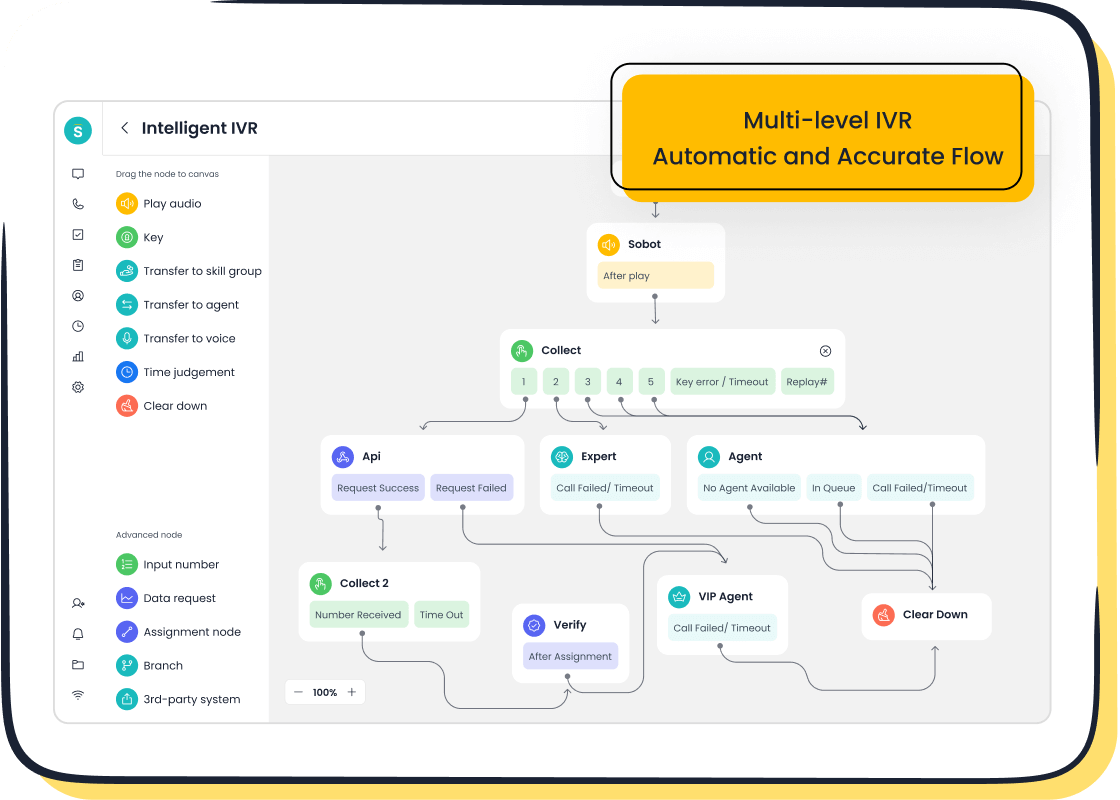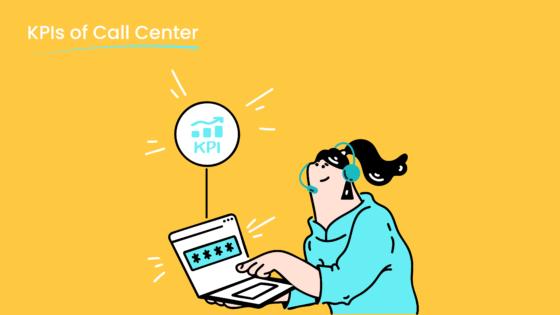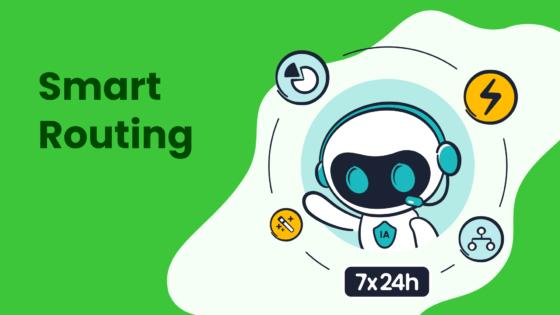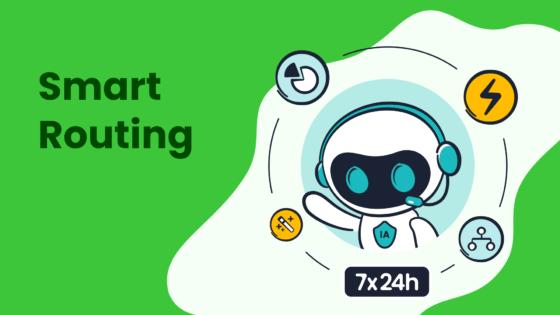How Call Center Agents Can Handle Angry Customers in 2025

Handling angry customers has never been easy, and 2025 brings even greater challenges. Customers today expect faster resolutions and seamless interactions across multiple channels. Did you know that 49% of customers who left a brand last year cited poor experiences as the reason? And just one bad interaction can cause a third of them to abandon a brand they love. The stakes are higher than ever.
As a call center agent, knowing how to handle irate customers is crucial. It’s not just about solving problems—it’s about keeping customers loyal. Adopting omnichannel customer service tools like Sobot can help you stay ahead. With features like AI-powered Voicebots and unified workspaces, you can manage angry callers more effectively while maintaining your composure. Combining these tools with emotional intelligence ensures you can turn even the toughest conversations into opportunities to build trust.
Stay Calm and Composed
Why staying calm is the first step in how to handle irate customers
When emotions run high during a call, your calm demeanor can set the tone for the entire conversation. Staying composed helps you manage your own emotions and creates a sense of stability for the customer. Research shows that agents who remain calm and empathetic are more likely to de-escalate angry clients. Customers value kindness, especially during stressful moments, and a calm approach encourages open dialogue.
Think of it this way: if you mirror the customer’s frustration, the situation can spiral out of control. But when you stay calm, you create a safe space for the customer to express their concerns. This approach not only helps you handle angry customers effectively but also builds trust and shows professionalism.
Techniques for maintaining composure during heated interactions
Keeping your cool isn’t always easy, but it’s a skill you can develop. Here are some practical techniques:
- Take a deep breath: A brief pause can help you reset and focus.
- Use empathetic phrases: Saying things like, “I understand why this is frustrating,” can validate the customer’s feelings.
- Focus on the issue, not the emotion: Redirect the conversation toward finding a solution.
- Practice active listening: Let the customer vent without interrupting. This shows respect and helps you understand their concerns better.
A calm and empathetic tone, combined with active listening, can significantly reduce tension. For example, using phrases like, “I see why this feels upsetting,” can make the customer feel heard and valued.
Leveraging Sobot's Voice/Call Center for stress-free call management

Technology can be your ally in staying composed. Sobot’s Voice/Call Center equips you with tools to manage calls efficiently, even in high-pressure situations. Its AI-powered Voicebot can handle repetitive queries, giving you more time to focus on complex issues. The unified workspace consolidates customer data, so you don’t have to scramble for information during a call.
Additionally, features like real-time monitoring and analysis provide insights into call dynamics, helping you adjust your approach on the fly. With a 99.99% system uptime, you can rely on Sobot to keep your operations running smoothly. These tools not only enhance your ability to de-escalate angry clients but also make your job less stressful.
By combining these techniques with Sobot’s advanced solutions, you can turn challenging calls into opportunities to build stronger customer relationships.
Practice Active Listening
The importance of active listening to handle angry customers
When dealing with an irate customer, your ability to listen actively can make all the difference. Customers often feel frustrated because they believe no one is truly hearing them. By practicing active listening, you show them that their concerns matter. This simple act can turn a heated conversation into a productive one.
Active listening isn’t just about hearing words—it’s about understanding the emotions behind them. Studies show that teams with leaders who listen actively experience a 25% boost in productivity. Similarly, evaluators who practice active listening score significantly higher in cooperation ratings compared to those who don’t. These findings highlight how this skill can foster trust and collaboration, even in tense situations.
As a call center agent, mastering this technique helps you not only resolve issues but also build stronger relationships with customers. It’s a win-win for both sides.
Steps to ensure customers feel heard and valued
Making customers feel valued starts with how you listen. Here’s a step-by-step guide to help you:
- Focus fully on the customer: Eliminate distractions and give them your undivided attention.
- Acknowledge their emotions: Use phrases like, “I can see why this is upsetting,” to validate their feelings.
- Paraphrase their concerns: Repeat what they’ve said in your own words to confirm you’ve understood.
- Ask clarifying questions: If something isn’t clear, ask politely for more details.
- Summarize the issue: Before offering a solution, summarize the problem to ensure you’re on the same page.
These steps not only help you understand the customer’s concerns but also show them that you genuinely care.
Avoiding interruptions and focusing on customer concerns
Interrupting an angry customer can escalate the situation. Instead, let them speak without cutting in. This approach improves metrics like First Contact Resolution (FCR) and Customer Satisfaction Score (CSAT).
| Metric | Description |
|---|---|
| First Contact Resolution (FCR) | Resolving issues in the first interaction boosts satisfaction and reduces repeat calls. |
| Customer Satisfaction Score (CSAT) | Reflects how customers perceive their experience, a key indicator of service quality. |
| Average Handle Time (AHT) | Balances efficiency with quality, ensuring customers don’t feel rushed. |

Sobot’s unified workspace can help you stay focused. By consolidating customer data in one place, it eliminates the need to switch between systems. This allows you to concentrate fully on the conversation, ensuring the customer feels heard and valued.
Tip: Silence can be powerful. When you pause and let the customer finish, you show respect and gain valuable insights into their concerns.
By avoiding interruptions and listening actively, you can transform even the most challenging calls into positive experiences.
Show Empathy and Build Trust

How empathy helps call center agents handle an irate customer
Empathy is your secret weapon when dealing with an angry caller. It helps you connect with their emotions and shows that you genuinely care about their concerns. When you acknowledge their feelings, you make them feel understood, which can instantly calm the situation. This approach not only prevents escalation but also builds trust between you and the customer.
Here’s why empathy matters:
- It reassures the customer that their frustration is valid.
- It fosters trust, making them more open to solutions.
- It allows you to offer personalized resolutions, improving the overall customer experience.
For example, if a customer is upset about a delayed delivery, saying, “I understand how frustrating this must be for you,” can make them feel heard. This simple act of empathy can turn a negative interaction into a positive one.
Phrases and techniques to convey understanding
Words matter, especially when emotions run high. Using the right phrases can help you convey empathy and defuse tension. Here are some examples:
- “Thank you for bringing this to our attention.”
- “We really appreciate your honest feedback!”
- “Thank you for giving us an opportunity to do better.”
- “Thanks for your patience.”
These phrases show that you value the customer’s input and are committed to resolving their issue. Pair these with techniques like active listening and mirroring their concerns. For instance, if they say, “I’ve been waiting for hours,” respond with, “I understand how frustrating it is to wait so long. Let’s fix this for you.”
Balancing empathy with professionalism for effective resolutions
While empathy is crucial, maintaining professionalism ensures the conversation stays productive. Apologize sincerely when necessary, but focus on finding a solution. For example, after acknowledging their feelings, guide the discussion toward resolving the issue.
Sobot’s AI-powered Voicebot can assist by handling repetitive queries, allowing you to focus on complex problems. Its unified workspace ensures you have all the customer’s information at your fingertips, helping you respond quickly and effectively. This balance of empathy and professionalism not only resolves the issue but also leaves a lasting positive impression.
Tip: Always follow up after resolving the issue. A quick check-in shows you care and reinforces trust.
Offer Clear and Practical Solutions
Identifying the root cause of customer frustration
When a customer calls in frustration, the first step is to uncover the real issue behind their anger. Sometimes, what they express isn’t the actual problem—it’s just the surface. As a call center agent, digging deeper can help you pinpoint the root cause and address it effectively. This approach not only resolves the immediate concern but also prevents similar issues from recurring.
Here’s why identifying the root cause matters:
- It can reduce customer support call volume by up to 50%.
- Companies that focus on effortless experiences see a 50% boost in customer loyalty and a 15% increase in revenue.
- Addressing frustrations like long wait times or confusing processes lowers churn rates and improves overall satisfaction.
For example, if a customer complains about a delayed delivery, the real issue might be a lack of communication about the delay. By identifying this, you can offer a solution that not only fixes the problem but also improves their experience moving forward.
Presenting solutions effectively using positive language
Once you’ve identified the issue, presenting a solution in a clear and positive way is key. Customers respond better when you use language that’s reassuring and optimistic. Instead of saying, “I can’t do that,” try, “Here’s what I can do to help.” This shift in tone makes a big difference in how the customer perceives your response.
Here are some tips for presenting solutions effectively:
- Be specific: Clearly explain the steps you’ll take to resolve the issue.
- Use positive phrases: Say things like, “Let’s work together to fix this,” or “I’ll make sure this gets resolved quickly.”
- Focus on outcomes: Highlight how the solution benefits the customer.
For instance, if a customer is upset about a billing error, you could say, “I understand how frustrating this must be. I’ll correct the error and ensure your account reflects the right amount immediately.” This approach not only resolves the issue but also reassures the customer that you’re on their side.
How Sobot's AI-powered Voicebot enhances solution delivery
Technology can make problem-solving faster and more efficient. Sobot’s AI-powered self-service tools, like its Voicebot, are game-changers for handling angry customers. The Voicebot uses intelligent interaction and intent recognition to understand customer concerns quickly. It can handle repetitive queries, freeing you up to focus on more complex issues that require human empathy.

With features like smart call routing and a unified workspace, Sobot ensures you have all the information you need to deliver effective resolutions. For example, if a customer calls about a product issue, the Voicebot can gather details about the purchase and pass them to you. This saves time and lets you focus on solving the problem.
Sobot’s AI-powered self-service tools also improve customer satisfaction by reducing wait times and providing instant answers. With a 99.99% system uptime, you can rely on Sobot to keep operations smooth, even during peak hours. By combining these tools with your problem-solving skills, you can turn frustrated callers into loyal customers.
Follow Up to Ensure Customer Satisfaction
Why follow-ups are essential in customer service
Following up after a call isn’t just a nice gesture—it’s a critical step in ensuring a successful resolution. When you follow up, you show customers that their concerns matter and that you’re committed to their satisfaction. This extra effort can turn a frustrated caller into a loyal advocate for your brand.
Studies confirm that systematic follow-up processes significantly enhance customer satisfaction. Without follow-ups, unresolved issues can linger, leaving customers dissatisfied. Simple actions like sending personalized emails or surveys demonstrate attentiveness and reduce the chances of repeat contacts. For example, a quick email asking, “Is everything resolved to your satisfaction?” can make a world of difference in the customer experience.
Best practices for post-call follow-ups
To make your follow-ups effective, you need a clear strategy. Here are some best practices that have proven successful in call centers:
| Best Practice | Description |
|---|---|
| Personalized Communication | Establishing dependable support channels and personalized follow-ups fosters loyalty. |
| Continuous Feedback | Regular check-ins and proactive outreach help identify issues and adapt strategies. |
| First Contact Resolution | Resolving issues during the initial interaction builds trust and reduces call volume. |
Did you know that 79% of consumers value their experience with a brand as much as the product or service itself? This highlights how crucial it is to make every interaction, including follow-ups, count. By personalizing your communication and seeking feedback, you can strengthen relationships and improve retention rates.
Using Sobot's unified workspace to streamline follow-up processes
Managing follow-ups can feel overwhelming, especially when you’re juggling multiple tasks. That’s where Sobot’s unified workspace comes in. It consolidates all customer data, making it easy for you to track interactions and send timely follow-ups. Whether it’s a quick email, a survey, or a call-back, you’ll have everything you need in one place.

For example, if you’ve just helped handle an irate customer, Sobot’s system ensures you can document the interaction and schedule a follow-up seamlessly. Its AI-powered tools can even automate routine follow-ups, saving you time while maintaining a personal touch. With Sobot, you can focus on building trust and delivering an exceptional customer experience without worrying about the logistics.
Tip: Always follow up within 24-48 hours. This shows urgency and reinforces your commitment to resolving the issue.
Common Mistakes to Avoid
Reacting emotionally to customer anger
When an irate customer lashes out, it’s easy to let emotions take over. But reacting emotionally can escalate the situation and make it harder to resolve the issue. Instead, focus on staying calm and professional. Remember, the customer’s frustration isn’t personal—it’s about the problem they’re facing.
For example, if a customer raises their voice, avoid matching their tone. Instead, respond with a steady, empathetic voice. This approach can help de-escalate the tension and steer the conversation toward a solution. Tools like Sobot’s AI-powered Voicebot can also assist by handling repetitive queries, giving you time to cool off and approach the situation with a clear mind.
Tip: Practice mindfulness techniques, like deep breathing, to stay composed during heated calls.
Making unrealistic promises
Overpromising might seem like a quick way to calm an angry customer, but it often backfires. When you exaggerate or make false promises, you risk losing their trust. For instance, saying, “I’ll fix this immediately,” when the solution requires more time, can lead to disappointment.
Here’s why honesty matters:
- Exaggerating product features can erode trust when the truth comes out.
- False promises damage your reputation and hurt customer relationships.
- Transparency builds credibility and fosters long-term loyalty.
Instead of overpromising, focus on what you can realistically deliver. For example, say, “I’ll escalate this to our team and update you within 24 hours.” This approach sets clear expectations and shows your commitment to resolving the issue.
Failing to document interactions properly
Every customer interaction is a learning opportunity. Failing to document calls can lead to repeated mistakes and unresolved issues. Imagine a customer calls back about the same problem, and you have no record of their previous interaction. This not only frustrates them but also wastes valuable time.
Using tools like Sobot’s unified workspace can simplify documentation. It automatically logs call details, customer history, and resolutions, ensuring you have all the information you need for follow-ups. Proper documentation also helps your team identify recurring issues and improve processes.
Note: Always review your notes before ending a call to ensure accuracy and completeness.
The Role of Empathy and Emotional Intelligence
Emotional intelligence as a key skill for call center agents
Emotional intelligence (EI) is a game-changer for call center agents. It’s the ability to understand and manage emotions—both yours and the customer’s. Why does this matter? Because emotions drive interactions. When you can recognize frustration or anger early, you can respond in ways that calm the situation instead of escalating it.
Here’s how EI benefits you:
| Benefit | Description |
|---|---|
| Enhances Customer Interactions | You connect better with customers by showing empathy and patience. |
| Reduces Conflict and Escalations | Spotting frustration early helps you use de-escalation techniques effectively. |
| Boosts Agent Resilience | EI helps you handle stress and rejection, reducing burnout. |
| Boosts Customer Loyalty | Customers feel valued and understood, which keeps them coming back. |
Call center agents with high EI often receive higher customer satisfaction ratings. Why? Because they make customers feel heard and valued. This skill isn’t just nice to have—it’s essential for delivering exceptional service.
Developing emotional intelligence through training and practice
You can build emotional intelligence with consistent effort. Start by focusing on these seven areas:
- Self-awareness: Recognize your emotions and how they affect your performance.
- Empathy: Understand and connect with customer emotions.
- Active listening: Pay attention to both words and tone.
- Emotional regulation: Stay calm under pressure.
- Adaptability: Adjust your approach based on the situation.
- Conflict resolution: Learn techniques to handle tough conversations.
- Continuous learning: Seek feedback and grow from experiences.
Sobot’s AI-powered tools, like its Voicebot, can support your growth. By handling repetitive tasks, these tools free you to focus on building emotional intelligence during complex interactions. Over time, you’ll notice how much easier it becomes to manage even the most challenging calls.
Real-world examples of emotional intelligence in action
Imagine this: A customer calls, furious about a billing error. Instead of reacting defensively, you listen actively and acknowledge their frustration. You say, “I understand how upsetting this must be. Let me fix this for you.” This simple act of empathy diffuses their anger.
Now, think about how Sobot’s unified workspace can help. It gives you instant access to the customer’s history, so you can quickly identify the issue and offer a solution. By combining emotional intelligence with the right tools, you turn a negative experience into a positive one.
Real-world results back this up. Companies that prioritize EI in their teams see higher customer loyalty and fewer escalations. When you master this skill, you don’t just solve problems—you build trust and lasting relationships.
Leveraging AI and Automation in 2025

How AI tools like Sobot's Voice/Call Center assist in managing irate customers
AI tools are transforming how you handle angry customers. They don’t just make your job easier—they make it smarter. By 2025, Gartner predicts that 85% of customer engagements will be handled by AI chatbots. This means you’ll rely on AI more than ever to streamline processes and improve response times.
Sobot’s Voice/Call Center is a perfect example of how AI can help. Its AI-powered Voicebot uses intelligent interaction and intent recognition to understand customer concerns quickly. Imagine a customer calling about a billing issue. Instead of spending time gathering details, the Voicebot collects the information for you and routes the call to the right team. This saves time and lets you focus on solving the problem.
AI tools also provide personalized interactions, which are crucial for addressing customer frustrations. With features like smart call routing and unified workspaces, Sobot ensures you have everything you need to deliver effective resolutions. These tools don’t just enhance efficiency—they improve the overall customer experience.
Tip: Use AI to handle repetitive queries so you can focus on complex issues that require empathy and human touch.
Real-time support and sentiment analysis for call center agents
Real-time sentiment analysis is a game-changer for managing irate customers. It helps you understand their emotions during a call, so you can adjust your approach instantly. Organizations using sentiment analysis have reported significant increases in customer satisfaction metrics.
Here’s how it works: AI analyzes verbal cues and emotional tones during the conversation. If a customer sounds frustrated, the system alerts you to address their pain points immediately. This insight allows you to respond with empathy and tailor your solutions to their needs.

Sobot’s Voice/Call Center takes this a step further. Its real-time monitoring and analysis tools give you instant feedback on call dynamics. You’ll know when to shift your tone or offer reassurance, making every interaction more effective. By combining sentiment analysis with your problem-solving skills, you can turn even the toughest calls into positive experiences.
Balancing automation with human interaction for optimal results
Automation is powerful, but it’s not a replacement for human connection. Customers value the personal touch, especially during stressful moments. While automation streamlines processes, overusing it can leave customers feeling trapped in automated loops.
Finding the right balance is key. Sobot’s Voice/Call Center combines digital efficiency with human engagement. Its AI-powered tools handle routine tasks, while you focus on building trust and empathy. For example, the Voicebot can answer FAQs, but complex issues still go to you. This approach ensures customers get fast resolutions without losing the human touch.
| Evidence Type | Description |
|---|---|
| Benefits | Automation improves efficiency and reduces call center workloads. |
| Challenges | Over-automation can frustrate customers who need human interaction. |
| Key Insight | Combining automation with human touchpoints boosts customer satisfaction. |
By leveraging tools like Sobot’s unified workspace, you can personalize interactions while maintaining meaningful connections. This balance not only enhances customer retention but also builds loyalty over time.
Note: Automation works best when it supports—not replaces—your ability to connect with customers.
Handling angry customers effectively starts with staying calm, listening actively, and showing empathy. These steps build trust and pave the way for clear solutions. Did you know that 35% of customers feel frustrated during service calls? That’s why tools like Sobot’s Voice/Call Center are game-changers. They simplify tasks, reduce stress, and let call center agents focus on what matters—helping customers.
Remember, every tough call is a chance to grow. Keep learning, adapting, and using the right tools to turn challenges into opportunities. You’ve got this!
FAQ
How can Sobot’s Voice/Call Center help with angry customers?
Sobot’s Voice/Call Center uses AI-powered Voicebots to handle repetitive queries, freeing you to focus on complex issues. Its unified workspace keeps customer data organized, so you can respond faster. With features like smart call routing, you’ll resolve problems efficiently and improve customer satisfaction.
What’s the best way to stay calm during heated calls?
Take a deep breath and focus on the issue, not the emotion. Use empathetic phrases like, “I understand why this is frustrating.” Sobot’s real-time monitoring tools can help you adjust your tone and approach, ensuring the conversation stays productive.
Why is active listening so important in customer service?
Active listening shows customers you care. It helps you understand their concerns and prevents miscommunication. Sobot’s unified workspace lets you focus fully on the conversation by consolidating customer data, making it easier to listen and respond effectively.
Can AI tools replace human empathy in customer service?
AI tools like Sobot’s Voicebot enhance efficiency but don’t replace empathy. They handle routine tasks, letting you focus on building trust and connections. Balancing automation with human interaction ensures customers feel valued and understood.
How does Sobot improve follow-up processes?
Sobot’s unified workspace streamlines follow-ups by organizing customer data and automating routine tasks. You can send personalized emails or surveys effortlessly, showing customers you care. This approach boosts customer satisfaction and retention rates.
See Also
Essential Strategies for Effective Call Center Quality Control
Best Contact Center Tools Analyzed for the Year 2024
Transformative Impact of AI on Customer Service Assistance
